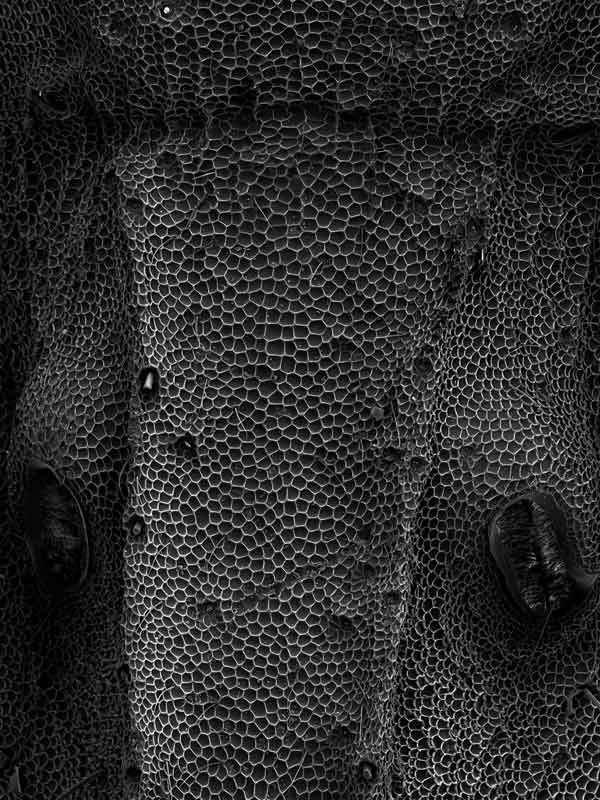The Rain Ants of Sarayaku

Looking through the lenses of awana (tejer, to weave, in Kichwa), rain ants cross others’ lives, and when it rains, they cross each other’s legs, interlocking their feet together, to weave themselves as shelters. The ants’ chemical receptors and tactile abilities are well adapted to read the intricate materiality, the entanglements and irregularities, of the organisms and places of the Sarayaku rainforest. Tamya añanku become the places they inhabit. They become territory. A decomposing palm tree in Shiwakucha, is held in place, stitched together by ant bodies. At dusk the ants progressively began migrating to a new site. When the ants left, the barks of the palm tree fell apart.

An improvised passage was woven by ant bodies to shorten the return of paper wasp larvae back to the shelter. This photograph was shown in Arte Actual, the gallery of Flacso University in September 2019 as part of the group exhibition “Sacha Ukupacha”.

SEM picture of ant foot, the tarsus, at 90x magnification. Electron microscopy of one specimen of rain ants (Eciton burchellii) from the Yasuni station of Universidad Catolica del Ecuador; imaging conducted with EVO-50 EP at Vilnius Centre for Physical Sciences and Technology in 2017.

SEM of the body section of a rain ant, as seen from above, at 130x magnification. The two orifices on the side are known as spiracles. Spiracles are the openings of the respiratory system of ants; imaging conducted with EVO-50 EP at Vilnius Centre for Physical Sciences and Technology in 2017.

Corporeal tensions of a woven shelter from inside a fallen tree close to Sarayakillu river. This image corresponds to a sequence of photographs demonstrating fluid performances, when the ants begin loosening corporeal tensions to disentangle from the nest to form hunting trails across the forest.

A fabric of interwoven bodies, legs stretching and tightly interlocked: a common sight of the exterior of rain shelters.